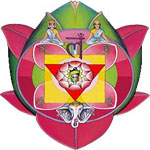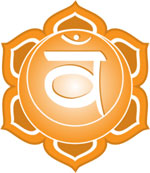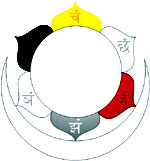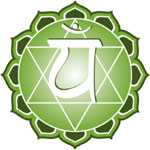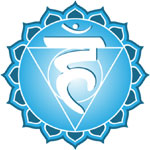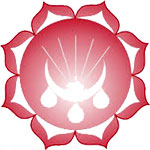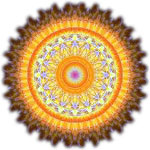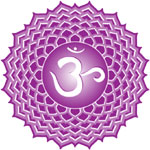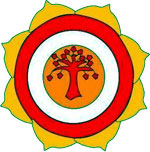

Chakras
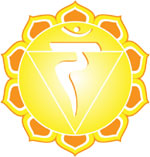 Aug 5, 2020
Aug 5, 2020
Manipuraka (Navel Chakra)
Features
- Mantra - RAM
- Mudra - Mandukasana mudra, Gyana/Chin mudra
- Element - fire (Agni)
- Physical representation - navel, solar plexus
- Location - along the spine, around the navel area up to the solar plexus
- Human Traits - aggression, domination, power
- Asana - any abdominal asana where you can flex the lower abdomen (leg raises, pendulum/Lolasana), Chakrasana
- Pranayama - Kapalbhati
- Form - lotus flower with ten yellow petals bearing Sanskrit letters
- Statement - "I have a strong body and a strong mind. I don't get sick and I am determined. I am a doer. I make things happen. But is this all there is to life?"
- Blocked by - shame (what are you shameful of? what in your past causes feelings of shame? Accept as fact of life and move on)
- no food, no water, body subsists on prana alone
- skin becomes radiant
- impervious to fire (fire element)
- freedom from diseases, never encounter any physical or mental afflictions. These afflictions will flee his presence
- will be able to face any disaster or accident with mental fortitude
- he develops divya drishti (divine perception)
- experience the bliss of identifying atman (universal self) as a separate entity from the body
- all organs or parts of the body function at their proper strength. Body becomes lean
- Trikala jnana, memory of past lives, ability to transcend time - present, past and future
- can enter the body of another
- can make gold
- Isitva siddhi - power to create and destroy
Assertion and Dominance
Manipuraka Chakra is the center of self-assertion. One attempts to dominate situations and other people. One seeks to manipulate the world according to personal wishes. This is expressed in the predominant motive of gaining wealth, respect, etc. This is the chakra level where people become very active and extroverted. They involve themselves with many external activities whether in work or play. Megalomaniac people are functioning at this level. They try to impose their will on other people and the world around them. It is the center where all things and other people are seen as a means of providing personal power and satisfying worldly ambitions. The Manipuraka Chakra is the center of dynamism and energy.
3 Gunas of Nature
Chakras fall within the 3 gunas (quality of energy) of nature. People at the Manipuraka are predominantly rajasic (active and intense) in nature; the lower chakras, Muladhara and Svadhisthana, are predominantly tamasic (lethargic and negative) in nature while the Anahatha, Vishuddhi, Ajna and Sahasrara are sattvic (beingness and harmony). At the level of the Manipuraka Chakra people seriously begin to question their attitude towards life and their place in the scheme of existence. This is in accordance with the Buddhist concept that the kundalini resides in manipura (but according to the Hindu concept, kundalini resides at the Muladhara, a lower and more primal chakra) - until the level of manipura (not muladhara), people are not knowingly on the path to expansion of the mind.

Blazing Fire
The word Manipuraka Chakra can be translated directly as 'the city of gems' because of the intensity of the pranic energy like the dazzling power of the sun. It radiates and distributes pranic energy throughout the entire human framework; without this chakra, each person would be lifeless and totally devoid of vitality. It is also compared to a blazing fire, since it burns up and assimilates the energy in food in the same way that fire burns up wood and releases the inherent energy. The absorption of energy in the human structure takes place at different levels - at grosser levels by absorbing the nutrients of food for the upkeep of the physical body and at a more subtle level by absorbing the more subtle essence of food to refuel the pranic body. The Manipuraka Chakra is intimately related to this entire process at all levels.
Navel as the 2nd Brain
Follow your GUT feel. According to Dr. Hansaji of The Yoga Institute, in the womb, our navel was our connection to life. But now as an individual, our navel continues to be our universe - thus the name solar plexus. Navel is a vital point in accupuncture and accupressure. Meditating on the navel (manipuraka chakra) gives us complete knowledge of our body and reveals its mysteries. In sickness, we can diagnose our bodies by meditating on the manipuraka. Activating this chakra cleanses the nadis and allow prana to flow freely throughout the body, eliminating disease and sickness in the process.
How to Activate the Manipuraka Chakra
- Mandukasana - compression on the navel using fist. Sit on vajrasana (heels and knees together as you sit on your heels), hands closed with thumb touching the base of the little finger, fists lightly touching each other by the navel with fingers pressed against the navel. Inhale, lifting the chest up and pulling the shoulders back. On the exhale, bend forward with head touching the floor and creating a compression on the navel with your 2 fists. Hold the breath on empty lungs (bahya kumbhaka) and keep the pressure while staying relaxed. Lift up on the inhale and repeat the breathing 6 times or more. This cleanses the nadis and cause prana vayu to flow freely.
- Nabhi Chikitsa - applying oil on the navel. You can use warm coconut oil and put about 1 tbsp on the navel. Let it stay there for a while and then start massaging clockwise with a little pressure. This cures many diseases.
- Kapalabhati (forced abdominal exhalation) - seated in Vajrasana (heals/knees together and you are seated on your heals), forceful exhalation using abdominal contraction. Put the palms on the navel while doing this. 108 repetitions would be ideal. On the last exhalation, empty the lungs, hold the breath, do the hand mudra (tips of thumbs by the base of the little finger, close hand into a fist, get the knuckles lightly touching each other, closed palms pressed against the belly 2.5 inches below the navel), tuck the belly into uddiyana bandha, and let the torso come down into your lap. When settled, release the belly so it relaxes onto your hand mudra. Hold the breath while chanting "ram" silently. This generates heat, draws energy from the cosmos, giving you vitality.
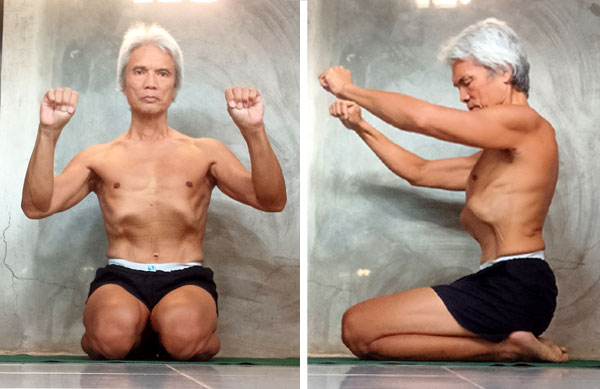
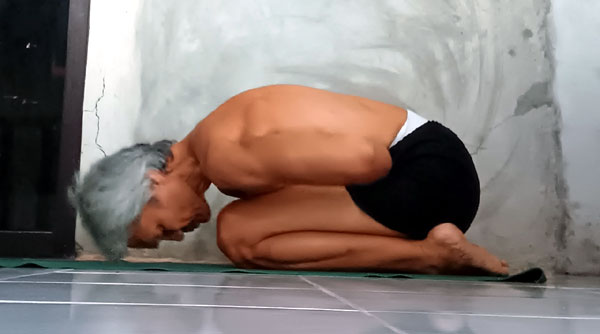
Know your Navel (the 2nd brain) by Dr. Hansaji of The Yoga Institute
Physical and Mental Virility
If consciousness (caitanya) is attained at the Manipuraka Chakra due to the strength of breath regulation (pranayama), then the practitioner will never encounter any physical or mental afflictions. These afflictions will flee his presence. One who has acquired caitanya in this chakra will be able to face any disaster or accident with mental fortitude. Not only that, he develops divine perception (divya drishti). He will experience the bliss of identifying universal self (atman) as a separate entity from the body. The main function of this chakra is to ensure that all organs or parts of the body function at their proper strength.
Uddiyana Bandha moving Prana from the Manipuraka Chakra
Uddiyana bandha also has many subtle influences on the pranic body. The navel is the area of the Manipuraka Chakra, which is the center of prana in the body. Physical stimulation of this area (thru Uddiyana Bandha) has repercussions on the more subtle flows of prana and its distribution throughout the body. Uddiyana also redirects prana into the sushumna nadi. This helps to expand awareness and induces meditation.
Tantra vs Buddhism on Kundalini
In Buddhism, Manipuraka Chakra is regarded as the seat of the kundalini and not the Muladhara Chakra. It regards the lower chakras (Muladhara and Svadisthana) as simply instinctive levels of man. It asserts that the expansion of awareness begins at the Manipuraka. The Manipuraka Chakra is indeed the center of prana that permeates and controls the body from behind the scenes. It is the center that puts man directly in contact with the subtle forces of the cosmos, and thus the seat of the Kundalini shakti.
Tantra yoga, however, regards expansion of awareness, as starting at the level of the Muladhara Chakra, for it is here that man begins to become aware of himself, even if in a very rudimentary form. The Muladhara Chakra is also a vital trigger center that is very much concerned with directing pranic forces from the base of the spine upwards through sushumna to the higher centers. It is often associated with transmutation of sexual energy into more subtle pranic energy (ojas). Both of these chakras are centers of pranic energy but in a slightly different sense. Thus kundalini resides here.
Manipuraka Chakra: Full Class
CHAKRA: MANIPURAKA CHAKRA
CHANTING: LAM
a) to start the class, 1 minute composure then 3 mins of RAM chanting - ujjayi breathing on the inhale while focus is on Matangi Mudra, then RAM chanting on the exhale while shifting focus from the mudra to the Manipuraka chakra
b) to end the class, 1 minute composure then 3 rounds of RAM chanting - ujjayi breathing on the inhale while focus is on Matangi Mudra, then RAM chanting on the exhale while shifting focus from the mudra to the Manipuraka chakra
INTRODUCTION
FULL LECTURE: Manipuraka Chakra
Manipuraka
- Statement - "I have a strong body and a strong mind. I don't get sick and I am determined. I am a doer. I make things happen. I will dominate, assert and manipulate to satiate my thirst for power and respect. But is this all there is to life?"
- Features
- in accordance to the Buddhist concept, kundalini resides in Manipura (not at the Muladhara) - until the level of manipura (not muladhara), because this is where expansion of consciousness begins
- the intensity of the pranic energy at the Manipuraka is like the dazzling power of the sun
- there is an intelligence in the Manipuraka that guides us, "My gut-feel is...."
- in the womb, the Manipuraka connects us to our mother via the umbilical cord. As an individual, the Manipuraka connects us the universe at large
- meditating on the Manipuraka (navel chakra) gives us complete knowledge of our body and allows us to diagnose our sickness
- activating this chakra cleanses the nadis and allows prana to flow freely throughout the body, eliminating disease and sickness
- Famous people - Elon Musk, Jeff Bezos. These are powerful people who will bend reality to their will. But they're not yet spiritual.
- Mantra - RAM
- Sitting Pose - vajrasana
- Asanas - backbends and navel contraction/extension/fortification
- Pranayama - kapalabhati
- Bandha - Uddiyana bandha
- Blockage - shame (what are you shameful of? what in your past causes feelings of shame? Accept as fact of life and move on)
- Activation - chanting RAM, Mandukasana, Nabhi Chikitsa (oil on navel), Kapalabhati,
- Element - fire (thumb)
- Mudra - mandukasana and thumb tip by the base of the little finger, then close the fist / matangi mudra
- Warning - a lot of powerful people get stuck here and just amass wealth and power all their lives. The others evolve and realize that the world is not just about them - they explore humanity and discover love and compassion (this is when they move up to the next chakra, anahata)
- Body / Physical - navel
- Location - navel
- Form / Color - lotus flower with ten yellow petals
- Enhanced Human Qualities
- all organs of the body optimally functional. Strong body and strong mind - no physical or mental afflictions can happen. Cannot get sick
- one begins to seriously question his attitude towards life and his place in this universe (as a genesis to his eventual spiritual path)
- able to face any disaster or accident with mental fortitude
- determined, unwavering, a shaker and doer
- Super Human Qualities (Siddhis)
- develops divya drishti (divine perception)
- you begin to realize that you are not the totality of your human perception (you are not your thoughts, memories, feelings, biases, etc.)
- experiences the singularity of time
- can enter the body of another
- power to create and destroy
- Manipuraka perspective vs other chakras
- Muladhara: "I need food clothing and shelter to survive"
- Svadhisthana: "sex, drugs and rock & roll"
- Manipuraka: "I, me, mine - the world is my oyster"
- Anahata: "I have love and compassion"
- Visuddhi: "Instead of fighting with life, I begin to flow with the current of life. I perform at a high level of competence. People naturally move towards me because I can do things beyond their understanding and abilities."
- Ajna: "My intuition is accurate. I have psychic abilities. I see things without the cobwebs and clutter. I see the world in black and white with a very minimal shade of gray (uncertainty, doubt, indecision). Nothing can touch me, nothing can disturb me. But experientially, I still do not feel the spontaneous ecstasy of life."
- Sahasrara: "I am the convergence of energy and consciousness. The self, the universe and God become one"
MUDRA: MATANGI (Manipuraka Chakra)
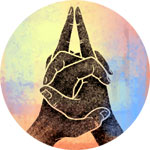
Matangi Mudra
Hand Position: fingers are interlaced at shoulder level, with 2 middle fingers straight and pressed against each other
Hand Level: shoulder level
Activated Elements: fire
Benefits: increased personal power and confidence, mental steadfastness
Chakra Affected: Manipuraka chakra
Affected Body Part: navel
Mantra: RAM
Dosage: 20 minutes
Notes: Matangi mudra, RAM mantra, Manipuraka chakra, fire, strength and determination, can be viewed as one bundled package
ASANA
- Chakrasana
- Hamsasana
- Mayurasana
- Nauli Kriya
ADDHITTANA
PRANAYAMA
Inhale coming up, and briefly engage all 3 bandhas while visualizing a ball of fire burning hot in the navel. Exhale while chanting RAM.
MEDITATION
Meditation: Manipuraka Chakra
In Matangi mudra, visualize the Manipuraka Chakra residing in your navel...a yellow lotus flower with 10 petals.
At the middle of this flower lies a small fire. Concentrate on this fire. Feel the heat. As you maintain focus on this fire, visualize the fire getting bigger, more intense and hotter. Feel the increasing heat.
As the body heats up, feel the body getting stronger. Feel the mind getting equally as strong as the body. The mind is steadfast, balanced, unwavering and determined. With a strong body and a strong mind, you make things happen. You are a doer. You act on your excitement. You do things giving your 100%.
Energy flows through you. Vitality and strength flow through you. Sickness cannot even come close. You are impervious to any disease.
CHANTING: RAM
a) to start the class, 1 minute composure then 3 mins of RAM chanting - ujjayi breathing on the inhale while focus is on Matangi Mudra, then RAM chanting on the exhale while shifting focus from the mudra to the Manipuraka chakra
b) to end the class, 1 minute composure then 3 rounds of RAM chanting - ujjayi breathing on the inhale while focus is on Matangi Mudra, then RAM chanting on the exhale while shifting focus from the mudra to the Manipuraka chakra
Manipura Kshetram and Exercise
Manipura kshetram
In kriya yoga practices, the area of the body directly in front of the Manipuraka Chakra area on the front surface of the body is also used as a point of awareness. This is called the Manipura kshetram and is exactly located at the navel. You should develop the ability to locate this region. Most people should find it quite easy to feel and locate the Manipuraka Chakra kshetram with the eyes closed.
Location
Two excellent methods of locating the Manipuraka Chakra trigger point and the Manipuraka Chakra kshetram are called Uddiyana Bandha and Manipuraka Chakra shuddhi (purification). These are practiced as follows:
Stage 1: Uddiyana Bandha
Sit in a comfortable position, preferably one of the traditional meditative asanas, with the knees flat on the ground. Perform uddiyana bandha. Be aware of the navel. Practise several rounds for about 5 minutes. Then stop uddiyana bandha. Fix your attention on the blood pulse at the navel. You should distinctly feel it. After a few minutes, transfer your attention to the Manipuraka Chakra trigger point in the spine. If necessary you can physically locate this region with your finger. Try to feel the blood pulse at this point. Continue in this manner for a few minutes. Then if you have time, again do a few more rounds of uddiyana bandha. Then again be attentive to the blood pulse at the Manipuraka Chakra kshetram and chakra for a few minutes each. Repeat the entire process again if you have time. Then proceed to stage 2.
Stage 2: Manipura Shuddhi (purification)
Take a comfortable sitting position. Hold the back straight. Keep the eyes closed. Breathe slowly and deeply. Feel the contraction and expansion of the navel as you breathe in and out. Feel as though you are breathing in and out at the navel. Fix your whole attention at the navel. Feel that the breath is being drawn from the Manipuraka Chakra trigger point in the spine through the navel and outwards as the abdomen expands during inhalation. Feel that the breath is being pushed inwards through the navel to the Manipuraka Chakra in the spine as the abdomen contracts with exhalation. Be attentive to this rhythmical process. Continue in this manner for at least 10 minutes. Then combine the mantra Aum with the inhalation and exhalation of breath. You should still continue to feel the movement of breath inwards and outwards, but it must be now synchronized with Aum. Feel the breath and mantra piercing the navel and the Manipuraka Chakra in the spine. At the end of exhalation, feel the Manipuraka Chakra kshetram being pierced, and feel the breath being pulled upwards from the Manipuraka Chakra kshetram during inhalation. Continue in this manner for as long as you have time available. Be attentive.
--- Gigit (TheLoneRider)
YOGA by Gigit ![]() |
Learn English
|
Learn English ![]() |
Travel like a Nomad
|
Travel like a Nomad ![]() |
Donation Bank
|
Donation Bank ![]()
RAM Seed Mantra Chanting and Music by Meditative Mind
Manipuraka Tuning and Balancing at 432hz by Taos Winds Spirit Music
Leave a comment?
Reader Comments:
 Grant
Grant (Aug 6, 2020) Every day I ask, "Is this it?". So far, I was woken up the next day so the answer has been satisfactory 🙂
(Aug 6, 2020) maybe one day, the answer is different 🙂
(Aug 6, 2020) Aaah yes hope that day is long into the future but when it comes of course I have no say.
Next Chakra:

![]()
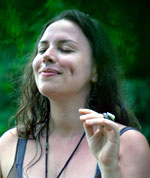
![]()
Gabriella's Birthday Bash at Mothership Resort
(Aug 8-9, 2020) It was an overnight of blissful indulgence as spaced-out party revelers celebrated Gabriella's birthday bash at Mothership, a domed resort in the foothills of Wang Mei, 2 hours drive from Old City....more »»
»» back to Yoga
»» back to Homepage
ARCHIVE 2025:
JAN |
FEB |
MAR
1970 |
1973 |
1975 |
1976 |
1977 |
1979 |
1981 |
1996 |
2000 |
2001 |
2002 |
2003 |
2004 |
2005 |
2006 |
2007 |
2008 |
2009 |
2010 |
2011 |
2012 |
2013 |
2014 |
2015 |
2016 |
2017 |
2018 |
2019 |
2020 |
2021 |
2022 |
2023 |
2024 |
2025 |
ALL BLOGS

